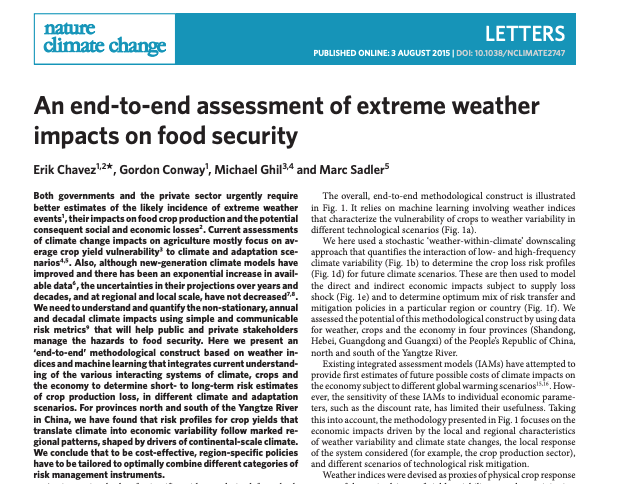An end-to-end assessment of extreme weather impacts on food security

Both governments and the private sector urgently require better estimates of the likely incidence of extreme weather events, their impacts on food crop production and the potential consequent social and economic losses. Current assessments of climate change impacts on agriculture mostly focus on average crop yield vulnerability to climate and adaptation scenarios. Also, although new-generation climate models have improved and there has been an exponential increase in available data, the uncertainties in their projections over years and decades, and at regional and local scale, have not decreased. We need to understand and quantify the non-stationary, annual and decadal climate impacts using simple and communicable risk metrics that will help public and private stakeholders manage the hazards to food security.
Here we present an ‘end-to-end’ methodological construct based on weather indices and machine learning that integrates current understanding of the various interacting systems of climate, crops and the economy to determine short- to long-term risk estimates of crop production loss, in different climate and adaptation scenarios. For provinces north and south of the Yangtze River in China, we have found that risk profiles for crop yields that translate climate into economic variability follow marked regional patterns, shaped by drivers of continental-scale climate. We conclude that to be cost-effective, region-specific policies have to be tailored to optimally combine different categories of risk management instruments.